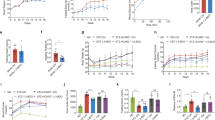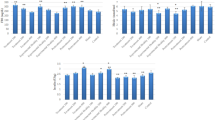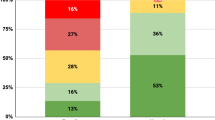Abstract
IN previous experiments we have found that the injection of cocarboxylase causes, in the alloxandiabetic rat, a diminution of the blood sugar and an increase of the respiratory quotient and of tissue glycogen. Thiamine produces similar effects; however, with severely affected animals it fails to act1,2. The hypothesis was then advanced that, in severe alloxan diabetes, thiamine does not produce any effect because its conversion to cocarboxylase is prevented. We have now obtained some evidence in support of this hypothesis.
This is a preview of subscription content, access via your institution
Access options
Subscribe to this journal
Receive 51 print issues and online access
$199.00 per year
only $3.90 per issue
Buy this article
- Purchase on SpringerLink
- Instant access to full article PDF
Prices may be subject to local taxes which are calculated during checkout
Similar content being viewed by others
References
Siliprandi, N., Acta Vitaminologica, 4, 259 (1950).
Siliprandi, D., and Siliprandi, N., Arch. Biol. (in the press).
Ochoa, S., in “The Biological Action of the Vitamins”, by E. A., Evans, p. 17 (Univ. of Chicago Press, 1944).
Ochoa, S., and Peters, R. A., Biochem. J., 32, 1501 (1938).
Siliprandi, D., and Siliprandi, N., Acta Vitaminologica, 5, 3 (1951).
Margaria, R., Biochem. Z., 270, 444 (1934).
Author information
Authors and Affiliations
Rights and permissions
About this article
Cite this article
SILIPRANDI, D., SILIPRANDI, N. Cocarboxylase in Experimental Diabetes. Nature 168, 422 (1951). https://doi.org/10.1038/168422a0
Issue date:
DOI: https://doi.org/10.1038/168422a0
This article is cited by
-
Action of Insulin on Thiamine Phosphorylation in vitro
Nature (1955)
-
The mechanism of action of insulin
Ergebnisse der Physiologie Biologischen Chemie und Experimentellen Pharmakologie (1955)
-
Flavines in experimental diabetes
Experientia (1955)
-
Action of Insulin on Thiamine Phosphorylation
Nature (1952)



